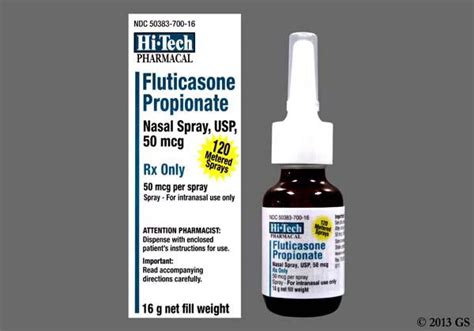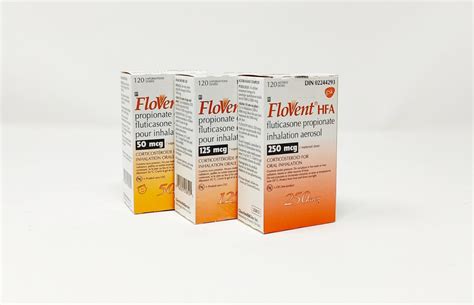Intro
Discover the 7 fluticasone side effects, including nasal spray and inhaler risks, such as thrush, hoarseness, and bronchospasm, and learn how to manage steroid treatment complications, interactions, and long-term usage consequences.
Fluticasone is a medication commonly used to treat various conditions, including allergies, asthma, and skin disorders. It belongs to the class of corticosteroids, which work by reducing inflammation and swelling in the body. While fluticasone is generally effective in managing symptoms, it can also cause several side effects. Understanding these side effects is crucial for patients to make informed decisions about their treatment and to minimize potential risks.
The importance of being aware of fluticasone side effects cannot be overstated. Patients who are well-informed about the potential risks associated with their medication are better equipped to manage their condition and to seek medical help when necessary. Moreover, knowledge of side effects can also help patients to take preventive measures, reducing the likelihood of adverse reactions. In this article, we will delve into the common side effects of fluticasone, exploring their causes, symptoms, and management strategies.
Fluticasone is available in various forms, including nasal sprays, inhalers, and topical creams. Each form of the medication has its unique set of side effects, although some effects may overlap. For instance, inhaled fluticasone is commonly used for asthma and chronic obstructive pulmonary disease (COPD), while nasal sprays are used for allergic rhinitis. Topical creams, on the other hand, are used for skin conditions like eczema and psoriasis. The diversity of fluticasone's applications underscores the need for a comprehensive understanding of its side effects.
Introduction to Fluticasone Side Effects

Understanding the Mechanism of Fluticasone
The mechanism of action of fluticasone involves the reduction of inflammation by inhibiting the production of inflammatory chemicals in the body. This action is beneficial for conditions characterized by excessive inflammation but can also lead to side effects due to the suppression of the body's natural immune response. For example, the use of inhaled corticosteroids like fluticasone can increase the risk of oral thrush, a fungal infection in the mouth, due to the local immunosuppressive effects.Common Fluticasone Side Effects

Less Common but Serious Side Effects
While less frequent, there are more severe side effects associated with fluticasone use. These include: - Osteoporosis, particularly with long-term use of high doses - Cataracts and glaucoma - Adrenal insufficiency, where the body's natural production of corticosteroids is suppressed - Growth suppression in children - Allergic reactions, although rare, can be severe and include anaphylaxisManaging Fluticasone Side Effects

Lifestyle Adjustments for Minimizing Side Effects
Lifestyle adjustments can play a significant role in minimizing fluticasone side effects. These include: - Maintaining good hygiene, especially when using inhaled or nasal forms of the medication - Avoiding close contact with individuals who have infections, as corticosteroids can increase the risk of infection - Monitoring bone density, especially in long-term users or those at risk of osteoporosis - Regular eye exams to detect early signs of cataracts or glaucomaSpecial Considerations

Interactions with Other Medications
Fluticasone can interact with other medications, either enhancing their effects or increasing the risk of side effects. For example, combining fluticasone with other corticosteroids can increase the risk of adrenal insufficiency. Interactions with certain antibiotics, antifungals, and HIV protease inhibitors can also occur, affecting the metabolism of fluticasone and altering its efficacy or side effect profile.Conclusion and Future Directions

Encouraging Patient Engagement
Patients play a crucial role in managing their treatment and side effects. Encouraging open communication with healthcare providers, reporting any changes in symptoms or concerns, and adhering to prescribed treatment plans are essential. Moreover, educating patients about the importance of preventive measures, such as regular health check-ups and maintaining a healthy lifestyle, can significantly impact the overall effectiveness of fluticasone treatment.What are the most common side effects of fluticasone?
+The most common side effects include throat irritation, hoarseness, nasal dryness, congestion, skin thinning, and an increased risk of infections.
Can fluticasone cause serious side effects?
+Yes, serious side effects can include osteoporosis, cataracts, glaucoma, adrenal insufficiency, and growth suppression in children.
How can I minimize the side effects of fluticasone?
+Minimizing side effects involves using the medication as directed, maintaining good hygiene, avoiding infections, and making lifestyle adjustments such as regular exercise and a balanced diet.
We invite readers to share their experiences with fluticasone, ask questions, or seek advice on managing side effects. Your engagement is invaluable in creating a community that supports informed healthcare decisions. Please feel free to comment below or share this article with others who might benefit from this information.
